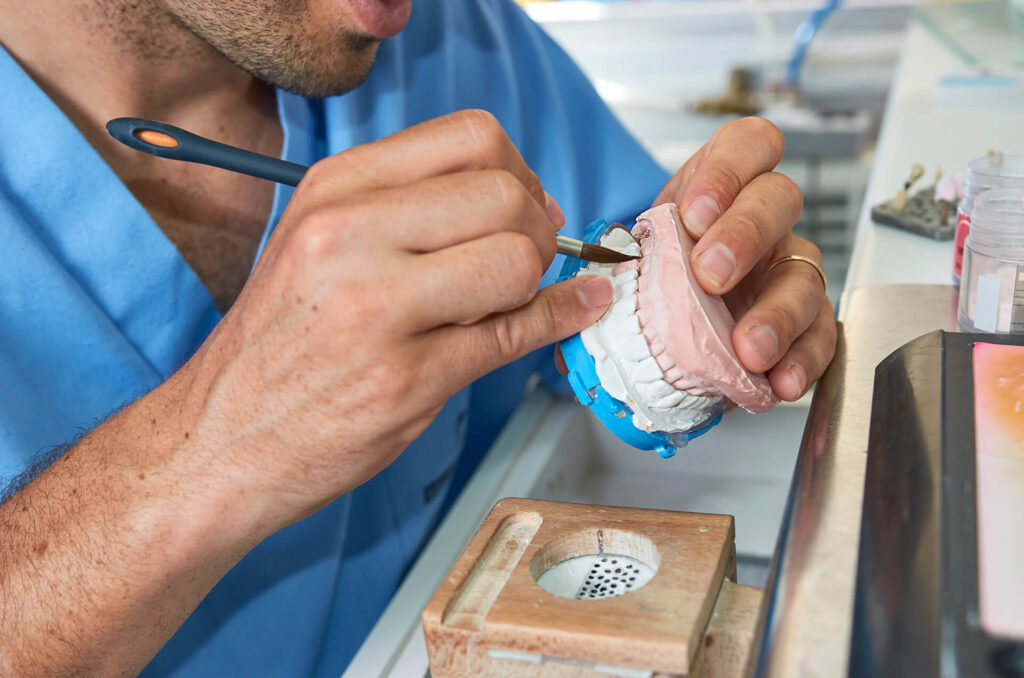Are you tired of always having to chew your food on just one side of your mouth? Are you suffering from broken or cracked teeth? Are you embarrassed to give a broad, wide smile because your teeth are crooked and do not line up with one another? Above, these situations are said to call for “mouth restoration.” The time has come! It is not a matter of style or trend or just aesthetics. The quality of your life is at stake! You have years of life ahead of you, so it makes sense for you to do something that will enable you to smile and eat normally — like everybody else!
In addition to dental implants, other solutions include crowns and bridges.
A crown is installed on a damaged or weakened tooth, to restore its natural appearance, or to prevent its total loss. Teeth require a crown when they are very discolored, or have been damaged or deformed as result of decay, cracks, or fractures, so they interfere with a normal bite. The crown helps restore the shape, function and aesthetic appearance of the tooth, without having to remove the tooth.
Crowns can be made of various materials such as porcelain, zirconia, and alloys of assorted metals. The dentist chooses what material to use depending upon the degree of damage, the location of the tooth and the patient’s preferences. Our doctors have the skill, experience and technological ability to perfectly match the crown’s appearance to that of your natural teeth.
The use of crowns made from zirconia achieves excellent aesthetic results. These crowns also are very durable.
When does a patient need a crown?
We opt for the use crowns in the following cases:
- Broken or cracked teeth
- Lack of a single tooth or several teeth
- A tooth needs a very large filling
- A tooth needs to be protected from continuous decay
- After root canal treatment
- There has been a significant deterioration of the tooth’s original shape and color
A bridge is a type of restoration that is employed after the loss of one or several teeth. The bridge is connected to adjacent teeth or us placed upon implants. There are several types of bridges, which differ from each other as to the manner of their installment and the material from which they are made.
In order to determine whether a bridge is needed, the dentist relies on x-rays and other technologies, and if a bridge, in fact, is needed he shaves the teeth that will serve as supports for the bridge. Meanwhile the dental technician manufactures the bridge. Afterwards the bridge is put in place. Bridge type restoration often is used when a number of missing teeth need to be restored and it is installed on implants. For example, in order to restore an entire jaw, a zirconia bridge can be installed only on 6 or more implants.
A dental bridge can suit anyone who is interested in:
- Having a smile where no one sees any missing teeth
- Having complete ability to chew all sorts of foods
- Preserving the natural appearance of one’s face and jaws
- Balanced load distribution when chewing
- Prevention of dislocation of adjacent teeth
- Adjustment of an implant
In our clinic we provide a variety of solutions for problems with teeth. We provide a fast and accurate computerized diagnosis of what exactly is the problem, and the solutions that we offer are carefully tailored to the needs and expectations of each individual patient. Our clinic is expertly equipped to provide convenience and maximum comfort for our patients, and its close proximity to the laboratory that we employ provides added convenience and efficiency, for our sake and for the sake of our clients.
Receive a diagnosis as well as a treatment plan at no cost and without obligation. Leave details now or call and make an appointment.



